Mercedes AMG GT vs Skoda Superb Combi – Which one offers the better deal?
Compare performance, boot capacity, efficiency and price at a glance.
Find out which car is the better choice for you – Mercedes AMG GT or Skoda Superb Combi?
Costs and Efficiency:
When it comes to price and running costs, the biggest differences usually appear. This is often where you see which car fits your budget better in the long run.
Skoda Superb Combi has a significantly advantage in terms of price – it starts at 35200 £, while the Mercedes AMG GT costs 102500 £. That’s a price difference of around 67276 £.
Fuel consumption also shows a difference: Skoda Superb Combi manages with 0.40 L and is therefore significantly more efficient than the Mercedes AMG GT with 10.30 L. The difference is about 9.90 L per 100 km.
As for range, the Skoda Superb Combi performs decisively better – achieving up to 134 km, about 123 km more than the Mercedes AMG GT.
Engine and Performance:
Power, torque and acceleration are the classic benchmarks for car enthusiasts – and here, some clear differences start to show.
When it comes to engine power, the Mercedes AMG GT has a significantly edge – offering 816 HP compared to 265 HP. That’s roughly 551 HP more horsepower.
In acceleration from 0 to 100 km/h, the Mercedes AMG GT is convincingly quicker – completing the sprint in 2.80 s, while the Skoda Superb Combi takes 5.70 s. That’s about 2.90 s faster.
In terms of top speed, the Mercedes AMG GT performs noticeable better – reaching 320 km/h, while the Skoda Superb Combi tops out at 250 km/h. The difference is around 70 km/h.
There’s also a difference in torque: Mercedes AMG GT pulls clearly stronger with 1420 Nm compared to 400 Nm. That’s about 1020 Nm difference.
Space and Everyday Use:
Cabin size, boot volume and payload all play a role in everyday practicality. Here, comfort and flexibility make the difference.
Seats: Skoda Superb Combi offers clearly more seating capacity – 5 vs 2.
In curb weight, Skoda Superb Combi is a bit lighter – 1575 kg compared to 1790 kg. The difference is around 215 kg.
In terms of boot space, the Skoda Superb Combi offers decisively more room – 690 L compared to 321 L. That’s a difference of about 369 L.
When it comes to payload, Skoda Superb Combi significantly takes the win – 584 kg compared to 215 kg. That’s a difference of about 369 kg.
Who wins the race?
The Skoda Superb Combi proves to be wins the duel decisively and therefore becomes our DriveDuel Champion!
Skoda Superb Combi is the better all-rounder in this comparison.

Skoda Superb Combi
Mercedes AMG GT
The Mercedes-Benz AMG GT is a striking blend of luxury and performance, capturing the essence of high-performance motoring. With its sleek, aerodynamic design and a roaring engine, it delivers an exhilarating driving experience. Inside, the cabin combines elegance with technology, offering comfort wrapped in premium materials for an immersive journey.
details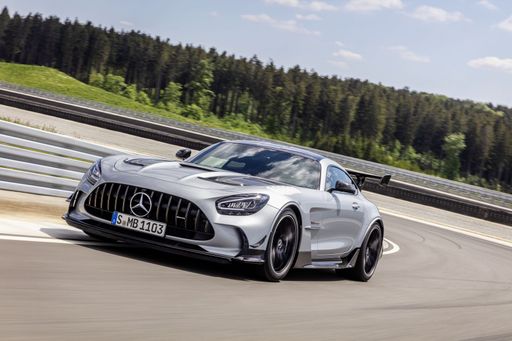 @ group-media.mercedes-benz.com
@ group-media.mercedes-benz.com
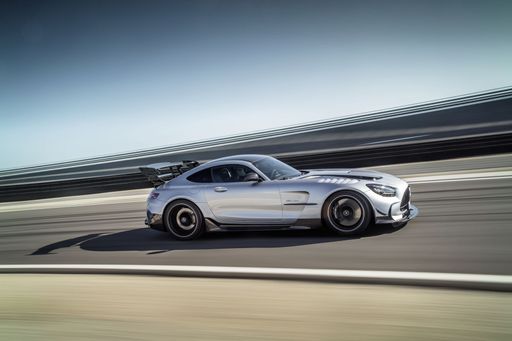 @ group-media.mercedes-benz.com
@ group-media.mercedes-benz.com
 @ group-media.mercedes-benz.com
@ group-media.mercedes-benz.com
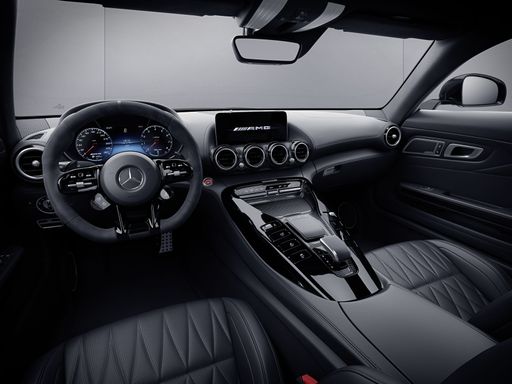 @ group-media.mercedes-benz.com
@ group-media.mercedes-benz.com
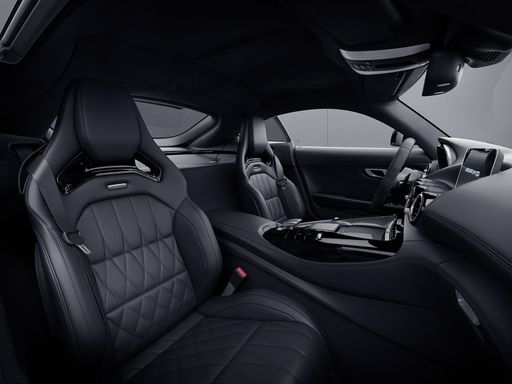 @ group-media.mercedes-benz.com
@ group-media.mercedes-benz.com
Skoda Superb Combi
The Škoda Superb Combi combines practicality and elegance, making it a popular choice for families and professionals alike. Its spacious interior offers exceptional comfort and ample storage, suitable for long journeys and everyday errands. Additionally, the refined design and advanced technology features ensure a sophisticated driving experience.
details @ Skoda Presse Deutschland
@ Skoda Presse Deutschland
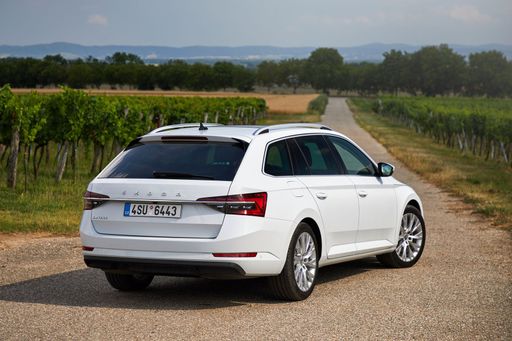 @ Skoda Presse Deutschland
@ Skoda Presse Deutschland

|

|
|
|
|
Costs and Consumption |
|
|---|---|
|
Price
102500 - 194400 £
|
Price
35200 - 51000 £
|
|
Consumption L/100km
10.3 - 14 L
|
Consumption L/100km
0.4 - 7.8 L
|
|
Consumption kWh/100km
-
|
Consumption kWh/100km
-
|
|
Electric Range
11 km
|
Electric Range
124 - 134 km
|
|
Battery Capacity
-
|
Battery Capacity
19.70 kWh
|
|
co2
235 - 319 g/km
|
co2
8 - 178 g/km
|
|
Fuel tank capacity
70 L
|
Fuel tank capacity
45 - 66 L
|
Dimensions and Body |
|
|---|---|
|
Body Type
Coupe
|
Body Type
Estate
|
|
Seats
2
|
Seats
5
|
|
Doors
2
|
Doors
5
|
|
Curb weight
1790 - 2195 kg
|
Curb weight
1575 - 1853 kg
|
|
Trunk capacity
182 - 321 L
|
Trunk capacity
510 - 690 L
|
|
Length
4728 mm
|
Length
4902 mm
|
|
Width
1929 mm
|
Width
1849 mm
|
|
Height
1354 - 1359 mm
|
Height
1482 mm
|
|
Max trunk capacity
-
|
Max trunk capacity
1770 - 1920 L
|
|
Payload
170 - 215 kg
|
Payload
497 - 584 kg
|
Engine and Performance |
|
|---|---|
|
Engine Type
Petrol MHEV, Petrol, Plugin Hybrid
|
Engine Type
Plugin Hybrid, Petrol, Petrol MHEV, Diesel
|
|
Transmission
Automatic
|
Transmission
Automatic
|
|
Transmission Detail
Automatic Gearbox
|
Transmission Detail
Dual-Clutch Automatic
|
|
Drive Type
Rear-Wheel Drive, All-Wheel Drive
|
Drive Type
Front-Wheel Drive, All-Wheel Drive
|
|
Power HP
435 - 816 HP
|
Power HP
150 - 265 HP
|
|
Acceleration 0-100km/h
2.8 - 4.6 s
|
Acceleration 0-100km/h
5.7 - 9.3 s
|
|
Max Speed
280 - 320 km/h
|
Max Speed
220 - 250 km/h
|
|
Torque
500 - 1420 Nm
|
Torque
250 - 400 Nm
|
|
Number of Cylinders
4 - 8
|
Number of Cylinders
4
|
|
Power kW
320 - 600 kW
|
Power kW
110 - 195 kW
|
|
Engine capacity
1991 - 3982 cm3
|
Engine capacity
1498 - 1984 cm3
|
General |
|
|---|---|
|
Model Year
2025
|
Model Year
2024 - 2025
|
|
CO2 Efficiency Class
G
|
CO2 Efficiency Class
B, E, F, D, G
|
|
Brand
Mercedes-Benz
|
Brand
Skoda
|
Is the Mercedes AMG GT offered with different drivetrains?
The Mercedes AMG GT is available as Rear-Wheel Drive or All-Wheel Drive.
The prices and data displayed are estimates based on German list prices and may vary by country. This information is not legally binding.
